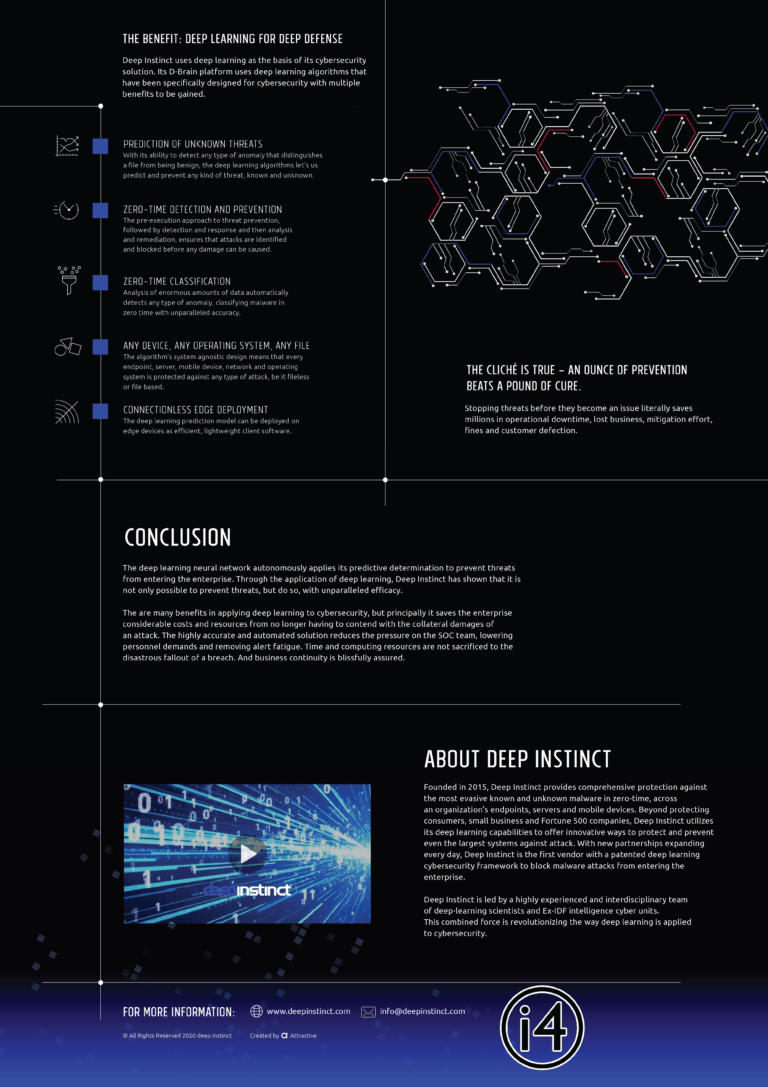Deep Instinct
FROM THE BRAIN TO AI

DEEP Learning And Cybersecurity
As more aspects of our lives take place on a digital sphere, it will need to be a major priority to keep that sphere safe and free from attack. This increasing digitization will not only make cybersecurity more pertinent than ever before, but the cybersecurity tools we use will need to employ the most advanced form of AI to ensure that it’s up to the task. We are entering an era where defeat and victory will be determined by one’s technological advantage. And considering what’s invested, it’s a challenge that no one can afford to lose.
Deep learning uses raw data, to scan and analyze every aspect of a file or vector. By the nature of this ability to determine patterns from raw data, deep learning can detect malicious anomalies and predict unknown attacks. The algorithm understands and defines by itself what is relevant – or not, allowing it to find complex non-linear correlations, which are hard to define, significantly improving accuracy. Deep Instinct is transforming the industry with its technological innovation, transforming security to a model of prevention. Its deep learning-based cybersecurity solution prevents attacks from entering the enterprise in the first place.
The cliché is true – an ounce of prevention beats a pound of cure.



